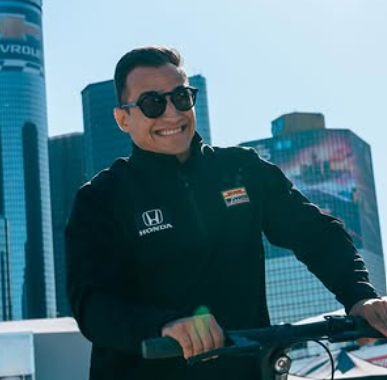Alex Palou’s insights provide valuable lessons for young drivers aspiring to enter the world of professional motorsport
While success is possible at any age, starting early offers undeniable advantages, from skill development to strategic growth.
For those dreaming of a career in racing, Palou’s journey serves as a testament to the importance of passion, perseverance, and early exposure to the sport.
Whether through karting or other forms of racing, the key takeaway remains the same: the sooner you start, the better your chances of reaching the top.
While McLaren’s offer was tempting, the lack of an F1 guarantee, combined with Ganassi’s competitive edge, made IndyCar the better option.
In the end, Palou made a calculated decision that prioritized stability, championships, and a team that fully believed in him.
Only time will tell if he ever revisits the Formula 1 dream, but for now, his IndyCar career remains his primary focus.
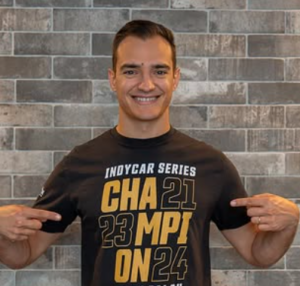
Also Read: Sebastian Montoya Steps into the Spotlight: PREMA Racing’s Newest F2 Talent
Table of Contents
Alex Palou: Early Beginnings in Motorsport
Starting a career in professional motorsport is a dream for many young aspiring drivers.1
However, the path to success in racing is often determined by how early one begins their journey.
Alex Palou, a three-time NTT IndyCar Series champion, strongly advocates for early exposure to karting as a crucial stepping stone.
In a YouTube short uploaded by The Manual on September 28, 2024, Palou highlighted why beginning at a young age can be instrumental in shaping a successful racing career.
Starting P2 for the Rolex 24h at @DAYTONA 👏 pic.twitter.com/AHFyHiOaHe
— Alex Palou Montalbo (@AlexPalou) January 24, 2025
Why Early Exposure to Karting Matters
Karting serves as the foundation for professional racing, teaching drivers fundamental skills such as handling, braking, and racecraft.
Palou emphasized that most professional drivers begin karting between the ages of four and ten, with some even starting as young as three.
The early years are critical because young drivers can adapt more easily to the technical and strategic aspects of racing.
Palou noted that while starting later is possible, it poses greater challenges due to the steep learning curve involved in catching up with peers who have had years of experience.
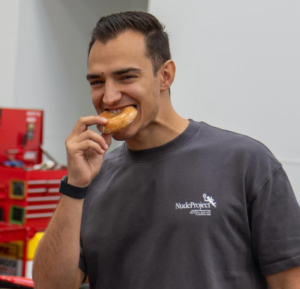
Alex Palou’s Personal Journey in Karting
Palou’s passion for racing ignited at an early age. Born in Sant Antoni de Vilamajor, Spain, he grew up near a go-kart track, which he passed daily on his way to school.2
His curiosity and excitement eventually led him to persuade his parents to let him try karting. Once he got behind the wheel, he was hooked.
In a 2021 Sports Illustrated Kids interview, Palou recounted how the only thing that kept him from practicing was bad weather.
He admitted that racing in wet conditions was particularly challenging, but he soon learned to navigate such difficulties, a skill that would later prove invaluable in his professional career.
The Learning Curve in Motorsports
Starting young allows drivers to progress through various levels of competition methodically.
Palou explained that the journey usually begins with small, less powerful go-karts, allowing young drivers to learn the basics before gradually moving to more advanced vehicles.
This structured progression helps racers refine their skills and develop a deep understanding of race dynamics.
By the time they reach their teenage years, young drivers have already accumulated significant experience, which gives them an edge when competing at higher levels such as Formula 4, Formula 3, and eventually, top-tier series like IndyCar or Formula 1.

Challenges of Starting Later in Racing
While some racers have found success despite starting later, Palou believes that beginning early provides a smoother learning experience.
Those who enter the sport at an older age must work harder to acquire the same level of skill, experience, and racecraft that their younger counterparts have already developed.
Physical conditioning, mental resilience, and quick decision-making are critical attributes in racing.
Starting young allows drivers to build these attributes gradually, while latecomers must undergo intensive training to reach competitive levels quickly.
The Role of Parental Support
Parental support plays a significant role in a young driver’s journey. Many of today’s top drivers, including Lewis Hamilton, Max Verstappen, and Alex Palou, had parents who supported their early racing endeavors.
Financial backing is another crucial factor, as motorsport is an expensive sport that requires investment in equipment, travel, and training.
Palou acknowledged the importance of his family’s support, noting that without their encouragement and financial commitment, his journey to professional racing would have been much more difficult.
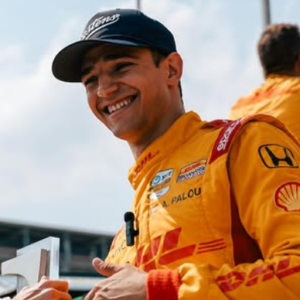
Alex Palou: Development of Racecraft and Strategy
Karting is more than just driving fast; it involves understanding race strategy, learning how to overtake, defending positions, and managing tires.3
These strategic elements become even more critical as drivers progress to higher levels of racing.
Although Palou strongly believes in starting young, there have been exceptions in motorsport history.
Some drivers, like Mark Webber and Damon Hill, began their karting careers later than usual but still managed to reach the pinnacle of the sport.
However, their journeys were marked by intense dedication, additional training, and a rapid learning curve to compensate for lost time.
These cases highlight that while late starters can succeed, the path is undeniably more challenging.
How Karting Prepares Drivers for Professional Racing
Karting isn’t just a stepping stone—it’s an essential training ground for professional racing. The skills acquired in karting directly translate to higher levels of competition.
For instance, Palou’s ability to handle high-speed corners and manage race strategies in IndyCar stems from his years of karting experience.
Furthermore, karting teaches drivers how to work with engineers, interpret telemetry data, and fine-tune their vehicles to optimize performance. These technical aspects are crucial when transitioning to professional racing categories.
Financial and Logistical Challenges of Youth Karting
Despite the advantages of starting early, karting comes with its own set of challenges. The financial burden of racing can be overwhelming for many families.
Palou acknowledged these challenges and emphasized the importance of sponsorships, scholarships, and motorsport academies in helping young drivers pursue their dreams.
The Psychological Impact of Early Racing
- Starting young not only builds technical skills but also shapes a driver’s mindset. Racing requires immense mental strength, discipline, and focus.
- Young drivers learn to handle pressure, accept failure, and stay motivated despite setbacks.
- Palou pointed out that resilience is a key trait in motorsport. Many young racers face disappointments, but those who persevere often emerge as stronger competitors in the long run.
- With advancements in technology and driver development programs, the future of young drivers in motorsport looks promising.
- Many teams now scout talent at an early age, offering structured training programs to groom future champions.
- Palou believes that as motorsport continues to evolve, young drivers will have even more opportunities to make their mark.
- He encourages aspiring racers to take advantage of karting programs, online simulators, and professional coaching to enhance their skills.
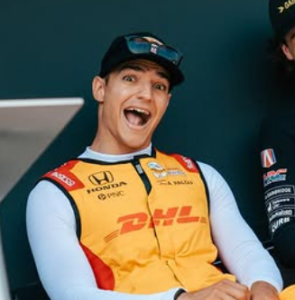
Also Read: Alex Palou: Who Is He? Meet His Parents, Bio, Wiki, Age, Career, Family and More
Why Did Alex Palou Turn Back on McLaren in 2023?
The Shocking Career Decision of Alex Palou
Alex Palou made a major career decision in 2023 when he decided against joining Arrow McLaren for the 2024 season.
Instead, he chose to remain with Chip Ganassi Racing, despite being linked to a potential Formula 1 opportunity with McLaren.
This unexpected reversal surprised many in the racing world, given the prestige associated with McLaren and the allure of Formula 1.
Palou’s Connection with McLaren
Palou’s connection with McLaren went beyond IndyCar. He had been part of the team’s F1 testing program and even participated in a practice session at the Circuit of the Americas (COTA) in 2022.
The Spanish driver was highly regarded by McLaren, and his participation in their testing program indicated that the team had a vested interest in his future.
McLaren’s recruitment of Palou was seen as a strategic move to secure a driver with both IndyCar success and potential for an F1 transition. However, despite these promising links, things did not unfold as many had expected.
The Formula 1 Dream vs. Reality
For any driver, the possibility of racing in Formula 1 is a dream come true. Palou, like many before him, saw McLaren as a gateway to the pinnacle of motorsport. However, he soon realized that while the opportunity to test was there, a guaranteed race seat was not.
“It was amazing. I got to test the [F1] cars and also Practice One at COTA last year, which was amazing. The opportunity was great, but there was nothing else there saying, ‘Oh, you will have a car,'” Palou told Motorsport.com.
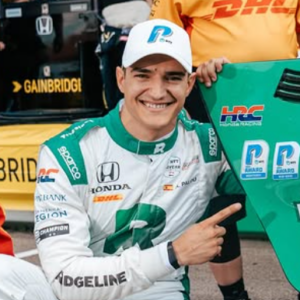
Alex Palou: Age and the Harsh Reality of F1 Opportunities
Palou explained that if he had been younger, he might have waited for an F1 opportunity. But at 26, he knew that breaking into the sport at an older age was rare.
Formula 1 teams often prioritize younger drivers, particularly those coming through their junior programs. This realization led Palou to reconsider his career trajectory.
With a lack of immediate F1 prospects and no clear pathway to securing a seat, staying in IndyCar became the logical choice for Palou.
His decision was pragmatic—why gamble on an uncertain future when he already had a championship-winning team backing him?
The Strength of Chip Ganassi Racing
Palou’s decision to stay with Chip Ganassi Racing wasn’t just about a lack of F1 opportunities; it was also a reflection of the strength of his current team.
Ganassi had provided him with a car capable of winning races and championships.
Under Chip Ganassi Racing, Palou had already won the 2021 IndyCar Series championship and was a consistent front-runner.
The team had a proven track record, a strong engineering unit, and a competitive car. The stability and championship potential offered by Ganassi made it difficult for Palou to leave.
View this post on Instagram
Why IndyCar Was the Better Choice
Palou’s decision highlighted the differences between IndyCar and Formula 1 in terms of driver opportunities and career stability.
Unlike F1, where seats are limited and politics play a huge role, IndyCar offers a more level playing field where talent can shine without as many external constraints.
Additionally, staying in IndyCar allowed Palou to focus on building a legacy in a series where he was already a proven winner.
The move also ensured he remained in a competitive car with a strong team, rather than taking a gamble on an uncertain F1 future.
Lessons from Past IndyCar-to-F1 Transitions
- Palou’s decision can be better understood by looking at the history of IndyCar drivers attempting to make the switch to Formula 1.
- In the past, drivers like Alex Zanardi and Michael Andretti struggled to adapt to the European-centric world of F1, despite their IndyCar success.
- More recently, Colton Herta was denied an F1 super license despite McLaren and Red Bull’s interest in him.
- These examples show that transitioning from IndyCar to F1 is not always a smooth path, further justifying Palou’s reluctance to take the risk.
- Palou’s decision had a significant impact on McLaren’s IndyCar lineup. The team had planned their future around him, and his departure forced them to reconsider their driver strategy.
- Without Palou, McLaren had to pivot and secure other talent to remain competitive in IndyCar.
- This situation also served as a reminder that in motorsport, contracts and commitments can be fragile, and drivers ultimately have to make the best decision for their careers.
- By choosing to stay with Ganassi, Palou secured his future in IndyCar with a top team. His focus remains on winning more championships and cementing his status as one of the series’ elite drivers.
- While the door to Formula 1 may not be entirely closed, Palou’s decision indicates that he values race-winning opportunities over uncertain dreams.
- In a sport where career longevity and success often depend on making the right choices, Palou’s move appears to be a wise one.
Also Read: Lili Reinhart: Breaking Barriers and Embracing Her Feelings in Hollywood
